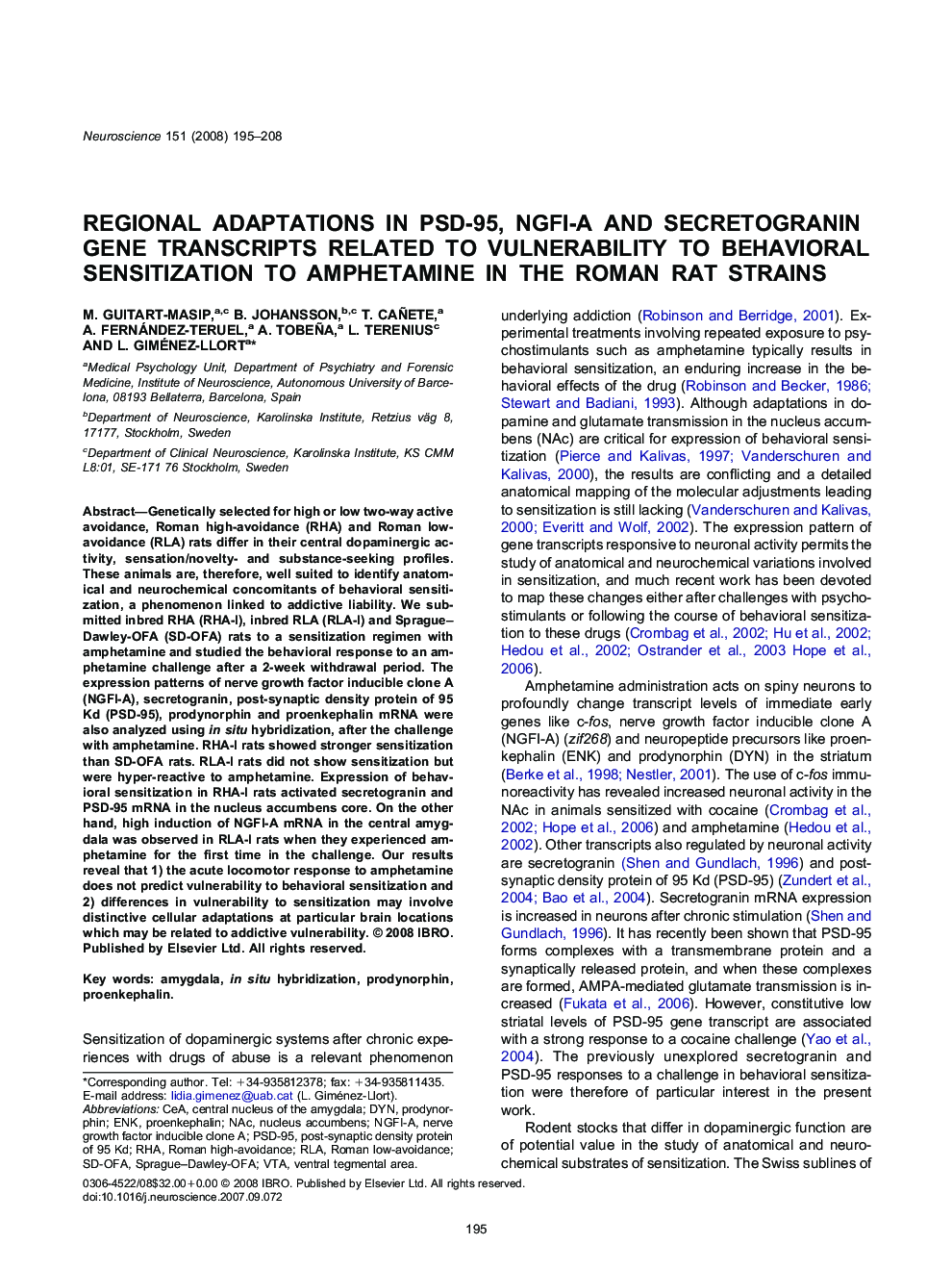| Article ID | Journal | Published Year | Pages | File Type |
|---|---|---|---|---|
| 4340876 | Neuroscience | 2008 | 14 Pages |
Genetically selected for high or low two-way active avoidance, Roman high-avoidance (RHA) and Roman low-avoidance (RLA) rats differ in their central dopaminergic activity, sensation/novelty- and substance-seeking profiles. These animals are, therefore, well suited to identify anatomical and neurochemical concomitants of behavioral sensitization, a phenomenon linked to addictive liability. We submitted inbred RHA (RHA-I), inbred RLA (RLA-I) and Sprague–Dawley-OFA (SD-OFA) rats to a sensitization regimen with amphetamine and studied the behavioral response to an amphetamine challenge after a 2-week withdrawal period. The expression patterns of nerve growth factor inducible clone A (NGFI-A), secretogranin, post-synaptic density protein of 95 Kd (PSD-95), prodynorphin and proenkephalin mRNA were also analyzed using in situ hybridization, after the challenge with amphetamine. RHA-I rats showed stronger sensitization than SD-OFA rats. RLA-I rats did not show sensitization but were hyper-reactive to amphetamine. Expression of behavioral sensitization in RHA-I rats activated secretogranin and PSD-95 mRNA in the nucleus accumbens core. On the other hand, high induction of NGFI-A mRNA in the central amygdala was observed in RLA-I rats when they experienced amphetamine for the first time in the challenge. Our results reveal that 1) the acute locomotor response to amphetamine does not predict vulnerability to behavioral sensitization and 2) differences in vulnerability to sensitization may involve distinctive cellular adaptations at particular brain locations which may be related to addictive vulnerability.
